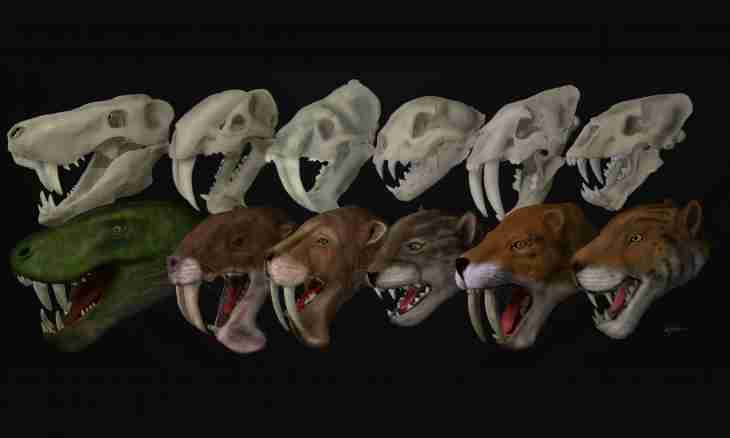Teeth are the bone formations located on jaws of many vertebrate animals, and at some fishes – in a drink. Originally teeth served for protection, but during evolution other function – preprocessing of food was assigned to them.
Teeth became important evolutionary acquisition, with their emergence the diet of animals became more various. And still never different groups of living beings had it identical. Depending on it also the structure of teeth differs. Having investigated teeth of a fossil animal, can tell a paleobiology, than it ate, differences between teeth of predators and herbivorous and in the ancient time were same as now.
Structure of teeth
Teeth of any animal are enameled – the special fabric, for 97% consisting of inorganic substances. Thanks to it enamel is the most solid fabric in an organism and excellently protects teeth. But even some chemicals can destroy such solid fabric.
Especially there are a lot of such substances in vegetable food. That at the animal eating such food, the layer of enamel survived, it has to be very powerful, and teeth herbivorous are distinguished by such feature. At predators the danger to destroy enamel is not so high therefore there is no need for a powerful layer. At predators the layer of enamel is much thinner, than at herbivorous. However, even the thick layer of enamel does not save teeth herbivorous from deleting. Animals early would lose teeth and would die of hunger, would eat their molars on which the main load is placed, did not grow during all life. Enamel could interfere with growth of teeth therefore molars of herbivorous are covered with it only on each side, and from above where tooth constantly grows, enamel is absent.
Differentiation of teeth
In the course of evolution the teeth got a different form depending on function which they perform. Four types were allocated: cutters, canines, premolyara (small radical) and painters (big radical). Cutters are located in a front part of jaws. Their appointment is to gnaw through or cut food. They are necessary at any way of food therefore all mammals have cutters, but nevertheless at herbivorous they play more important role. At predators cutters short and pointed. At herbivorous these teeth differ in a big variety. At zaytseobrazny in rodents the cutters long, in the form of chisels, and are available for ruminants only the lower cutters, and top is not present, these animals gnaw nothing, they only pinch a grass. The most interesting transformation was undergone by cutters at elephants – they turned into tusks. It is possible to call canines "the cutting and pricking tool". They are intended for an otryvaniye of pieces of food. Most often it should be done with meat therefore at predators the canines are more developed, than at herbivorous. Canines of predators are quite long and sharp, at herbivorous they or remind cutters in a form, or in general are absent. Molars (painters and premolyara) serve for chewing of food. Predators chew food very poorly therefore they have less molars, than at herbivorous. At some herbivorous (for example, at cows and horses) molars are separated from other teeth of diastemy – disproportionately wide interval. At diastema predators is too, but they are located in other places: ahead of the top canines and behind lower. Thanks to it the predator can densely close teeth, taking production. It is easy to notice that the person in structure of teeth cannot be carried neither to predators, nor to herbivorous. Differentiation of teeth at the person is not so expressed as at other animals, all teeth are developed approximately equally. It means that the person – an omnivorous being.

